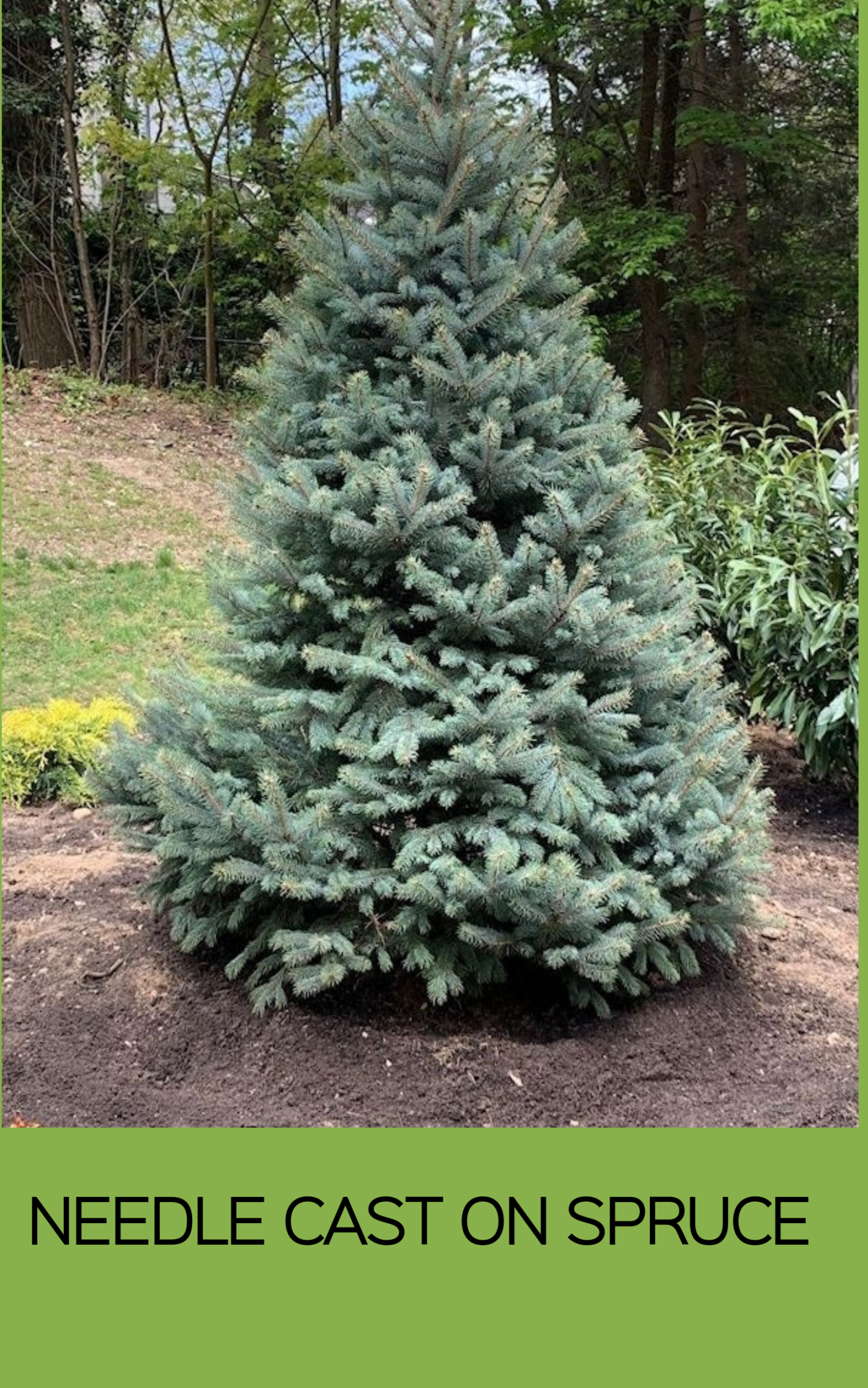Some familiar evergreens such as Colorado Blue Spruce may be susceptible to environmental stress. The recent pattern of summer drought, milder than usual winters and cool spring temperatures combined with wet conditions in the northeast have favored development of a fungal disease known as “needle cast”. Early detection and proper diagnosis is important in the treatment of this fungal disease and to ensure the health of your plant.

The best proactive means for preventing needle cast disease is to plant your Blue Spruce in the proper location and provide proper care. Blue Spruce prefer to be located in a well-drained soil in an area of full sun, meaning the plant should be receiving at least six hours of sunlight daily. A southern or western exposure suits this best. Prevent irrigation from directly spraying on the foliage of the plant. Constant moisture on foliage or over-watering can be a direct invitation for needle cast. Drip irrigation is recommended where possible, allowing the soil to dry between watering. Proper planting height is of course also necessary. Plant the tree at grade or slightly above the grade so that the root flare is visible. Do not plant too deeply. It is best that the lower branches have some air circulation above the ground.
The type of needle cast affecting Colorado Blue Spruce in the northeast is mainly Rhizosphaera needle cast (caused by the fungus Rhizosphaera kalkhoffii). While some browning and dropping of older needles in spruce is common, needle cast disease is noted by a distinct brownish-purple discoloration which appears on needles (usually towards the bottom of the tree) mostly in late summer, followed by the eventual death and dropping of older needles. In addition, the presence of black fruiting bodies on new growth in early spring is a sure sign. Typically, infections start near the bottom of the tree where foliage dries more slowly and progresses upwards. Lower branches may lose so many needles that growth at the tips stops, resulting in the death of the entire branch (photo below). Newer current growth may show no signs of the disease until during autumn and into spring.

Should your tree show signs of early needle cast, it is treatable. Needle cast can be effectively controlled with fungicides containing chlorothalonil. For moderate to severe Rhizosphaera needle cast, two properly-timed applications per year for at least two consecutive years (sometimes three) are required for control. After initial treatment, additional applications should occur when new needles are half elongated (around Memorial Day depending upon location) followed by a second application three to four weeks after the first. The timing of the two applications should be the same for the second and third year. Since needle cast is fungal and spread through spores, removal of branches showing early signs can prevent further infection, but the tree should still be treated with a fungicide and monitored on a regular basis.
The best method of preventing needle cast starts with proper planning, planting and monitoring. Early detection of any kind of disease leads to better results and remedies any further issues down the road. These tips also apply to dwarf forms of Blue Spruce, such as Picea pungens ‘Globosa’ (Globe Blue Spruce). Norway and Serbian Spruce are less likely to be damaged by needle cast and ‘Hoopsii’ and ‘Fat Albert’ cultivars of Colorado Blue Spruce are more resistant to the disease.
For more gardening tips Visit my Author Page
A Guide to Northeastern Gardening: Journeys of a Garden Designer Zones 3-9
Dream, Garden, Grow! -Musings of a Lifetime Gardener
Gardening by Month: A Monthly Guide to Planning the Northeastern & Mid-Atlantic Garden.
© Copyright Lee Miller@Landscape Design By Lee. All Rights Reserved.

Comments: